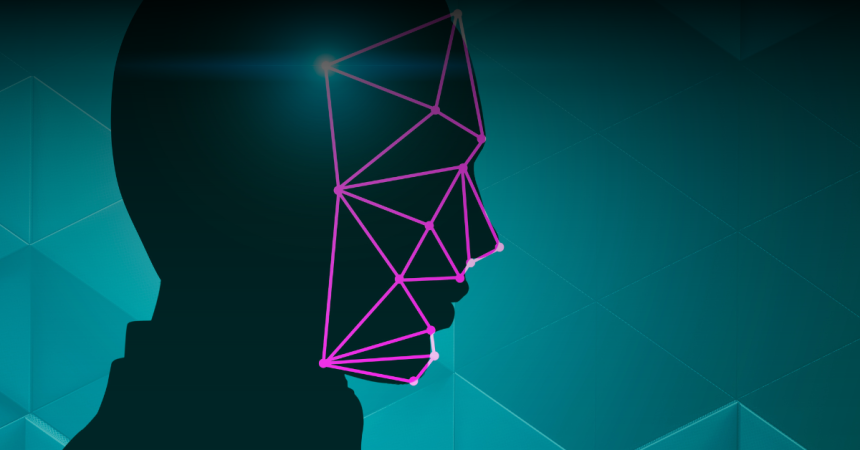Blog
Feb 26, 2024
AI in Cybersecurity
Mixed sentiment surrounds the application of AI in cybersecurity. Join us for an examination of where AI fits into our cybersecurity toolkits.
9 min read

AI in cybersecurity is revolutionizing how we defend against digital threats, leveraging advanced technologies like machine learning, deep learning, and natural language processing to enhance our protective measures. By analyzing vast amounts of data and identifying patterns, AI systems can quickly detect anomalies, predict potential attacks, and automate responses. This fusion of AI and cybersecurity is creating smarter, more resilient defense strategies. However, the integration of AI in cybersecurity is accompanied by its own set of challenges and questions.
Artificial Intelligence (AI) is the development of systems that replicate human intelligence—learning, adapting, and problem-solving in complex environments. In cybersecurity, AI plays a dual role. On the positive side, it enhances defenses by automating threat detection, analyzing massive datasets, and identifying patterns too subtle for human analysts. For instance, AI-driven systems can spot network anomalies or phishing attempts in real-time, allowing for faster response to threats. However, AI also has adversarial uses. Cybercriminals are leveraging AI to automate attacks, create more sophisticated malware, and evade detection by learning how security systems respond. This dual-use nature of AI highlights the need for strong, adaptive defenses, as the same technology enhancing security can also empower attackers to devise smarter, more elusive threats. Balancing the potential and the risks of AI is critical to maintaining an effective cybersecurity strategy.
AI plays a pivotal role in cybersecurity, offering both substantial benefits and serious challenges. On the benefit side, AI drastically improves threat detection and response. For example, Darktrace’s Enterprise Immune System uses machine learning to autonomously monitor network activity, detecting anomalies that signal potential attacks. In one instance, Darktrace identified a zero-day ransomware attack within minutes, stopping the breach before it could cause significant damage. Similarly, Google’s AI systems block over 100 million phishing attempts daily by scanning email patterns and flagging suspicious behavior, demonstrating AI’s ability to handle vast volumes of data and prevent attacks in real time.
However, AI also presents challenges, especially as cybercriminals adopt AI to enhance their attacks. A notable example is AI-generated malware, such as DeepLocker, a proof-of-concept created by IBM. This malware uses AI to remain dormant until it detects a specific target, making it incredibly difficult for traditional security tools to detect. Another example is the use of AI to create sophisticated phishing attacks, where machine learning algorithms are used to craft highly personalized spear-phishing emails, mimicking legitimate communication with alarming precision. Additionally, adversarial AI techniques, such as manipulating AI-driven security systems by feeding them deceptive data, can bypass traditional defenses, as shown in research where attackers tricked AI into misclassifying malware as benign.
These examples illustrate AI’s dual role in cybersecurity—while it strengthens defenses and automates threat responses, it also raises the stakes by enabling adversaries to launch more sophisticated, harder-to-detect attacks. Balancing AI’s potential with its risks is crucial for maintaining a strong cybersecurity posture.
AI in Cybersecurity: Practitioner Insights
Mixed sentiment surrounds the application of artificial intelligence (AI) in cybersecurity, not without reason. For every claim of AI as a game-changer, questions about its practicality, effectiveness, and potential for misuse arise. This discourse, supported by our survey insights from cybersecurity practitioners, takes us through a grounded examination of where AI fits within our cybersecurity toolkits.
Balancing Automation with Human Expertise
“AI is not a magic bullet, but a tool to augment human capabilities.”
“With AI, we’re able to identify and respond to threats more rapidly than ever before.”
AI is not a replacement for human capabilities in cybersecurity, but it can be a powerful augmentation tool. AI-driven cybersecurity can intelligently protect systems from cyber threats, attacks, damage, or unauthorized access through machine learning (ML), deep learning (DL), natural language processing (NLP), knowledge representation and reasoning (KRR), and expert systems (ES) modeling. This enhances cybersecurity solutions beyond traditional methods, offering more automated and intelligent security management. However, AI also introduces the necessity for trust and reliability systems to prevent new forms of attacks. Though AI can facilitate the automation and intelligent analysis necessary for defending against complex cyber threats, the synthesis of AI and human expertise illustrates the crucial value of professional judgment in cybersecurity.
This respondent captured the importance of this synergy: “AI provides us with the data, but it’s our job to understand the context and make informed decisions.”
The Challenge of Training AI in Cybersecurity
Maintaining data integrity in training AI systems has proven to be difficult. “The biggest hurdle is feeding AI systems with high-quality, unbiased data.” – the quality of data directly influences the effectiveness of AI in making accurate predictions and decisions.
The roles of AI in cybersecurity vary from threat prevention to detection and response, but it’s incumbent upon us to emphasize challenges with training and adopting AI as discovered in our survey:
- The development of regulations and principles
- Trust, accountability, and privacy concerns
- Bias in AI algorithms
- The adequacy of training datasets
- Human resource constraints
- Financial costs associated with developing effective AI-based cybersecurity solutions
Moreover, a respondent pointed out the dynamic nature of cyber threats: “What works today may not work tomorrow. Our AI systems need to be as adaptable as the threats they’re designed to combat.”
Traditional rule-based Network Intrusion Detection Systems (NIDSs) can struggle to keep pace with the diversification and sophistication of attacks. Cybersecurity is an ongoing arms race, and AI-based solutions encounter renewed challenges as attack methodologies advance and network traffic volumes increase. Continuous evolution of AI models will be required to maintain effectiveness in threat detection and classification.
Privacy Considerations in AI Deployment
Cybersecurity practitioners wrote about ethical and privacy concerns regarding AI adoption, with one saying “How we use AI in monitoring and data analysis must be balanced with respect for individual privacy rights.” Another response touched on the transparency of AI decision-making: “There’s a need for greater transparency in AI algorithms to build trust among users.”
Lack of algorithmic transparency can exacerbate privacy concerns, especially considering AI’s ability to process and analyze vast amounts of personal data, risking confidentiality breaches and unauthorized use. Addressing these concerns requires the development of clear legal frameworks, ethical guidelines, and mechanisms for ensuring AI systems are transparent. Involve stakeholders in AI development processes and consider implementing privacy-preserving techniques such as differential privacy in AI models.
AI in Cybersecurity – Steps for Integration
Cybersecurity practitioners should integrate AI with a strategic, informed mindset. Despite the concerns, organizations will likely continue to push for AI adoption in some capacity. The following steps are focused on strategic planning, adaptability, and continuous improvement as AI is integrated into cybersecurity frameworks:
- Strategic Planning: Begin with strategic planning to develop a common master plan that aligns with your organization’s goals and IT capabilities. This involves understanding the current cybersecurity landscape, identifying areas where AI can enhance security measures, and setting clear objectives for AI integration.
- Technological Integration: Work in close cooperation with IT vendors to integrate AI technologies. Focus on developing platforms that adhere to emerging standards to build an IT reference model that supports AI integration.
- Education and Training: Incorporate AI and cybersecurity research into the education and training of staff. Implement modules in existing courses or training programs to build awareness and skills related to the convergence of AI and cybersecurity, ensuring that the workforce is prepared to utilize AI tools effectively.
- Sociotechnical Integration: Consider the sociotechnical aspects of AI integration. This involves fostering collaboration between employees and AI systems to build sociotechnical capital, ensuring that AI tools are used effectively and ethically within the organization.
- Implement Security Measures: Leverage AI and machine learning algorithms to detect cyber threats and enhance the security of cyber-physical systems. This includes data normalization, feature extraction using techniques like Linear Discriminant Analysis (LDA), and employing advanced detection algorithms such as SFL-HMM with HMS-ACO for improved cybersecurity outcomes.
- Continuous Evaluation and Adaptation: Maintain an ongoing process of evaluation and adaptation to ensure that AI tools and strategies remain effective against threats. This requires regular assessment of AI performance, updating models and algorithms as needed, and staying informed about the latest AI and cybersecurity research and developments.
AI’s Role in Increasing Security Posture
“The initial investment in AI can be high, but the potential for cost savings and efficiency gains is even higher.”
“Smaller organizations might find the cost of AI prohibitive, but the benefits in terms of enhanced security posture can’t be ignored.”
These perspectives suggest that while the upfront costs and time invested may be demanding, the long-term benefits of AI in improving cybersecurity effectiveness can be substantial.
AI has reshaped cybersecurity strategies by introducing methods to enhance the security posture of organizations. Here are some ways AI has contributed to building cyber resilience:
- Enhancing Network Anomaly Detection: AI-based autoencoders can detect network anomalies with higher accuracy and efficiency, contributing to a more secure and resilient network infrastructure. These models employ data pre-processing methods and reconstruction error functions for accurately detecting anomalous network traffic.
- Differential Privacy (DP): Differential Privacy (DP) is a framework for ensuring privacy preservation in Artificial Intelligence (AI) models, particularly in scenarios involving sensitive information. One research contribution shows that DP can do more than just preserve privacy; it can also enhance security, stabilize learning, build fair models, and ensure composition in AI.
- Adversarial Machine Learning: AML offers a proactive stance against cyber threats by simulating adversarial tactics. This methodology involves the creation of algorithms that can learn from the tactics, techniques, and procedures (TTPs) of potential attackers, playing the role of an adversary to test and improve cyber defenses. It allows for the anticipation of attack vectors, identification of vulnerabilities before they can be exploited, and the development of more resilient and adaptive security measures.
How OffSec is Leveraging AI in Cybersecurity
OffSec KAI
OffSec Knowledge Artificial Intelligence (KAI) represents a groundbreaking advance in cybersecurity education. This innovative tool uses AI to enhance the educational process, making it more engaging, adaptable, and customized to meet individual learning requirements.
Designed to guide you through your course materials effortlessly, OffSec KAI offers instant support and precise answers to your queries. It provides personalized assistance and insights, empowering you to grasp complex topics more effectively and efficiently. As you progress through each lesson, OffSec KAI adjusts to your unique learning speed and style, delivering the most pertinent and beneficial guidance.
Background to Contemporary AI
We have also released a Learning Module – Background to Contemporary AI, which delves deep into the roots of artificial intelligence to clarify the evolution and ongoing development of the AI field. Understanding the historical trends that shaped AI allows us to better understand the scope of modern solutions like OpenAI’s ChatGPT among other recent AI advancements.
The discussion will also examine AI’s influence on cybersecurity, both as a mechanism for security, and an object of security. We also discuss AI’s potential for malicious use, its defensive applications, and its emergence as an increasingly critical attack surface.
Embracing AI with a Measured Approach
Our survey revealed a nuanced picture: cybersecurity practitioners are navigating the integration of Artificial Intelligence (AI) in cybersecurity with a blend of caution and strategic acumen, understanding that while AI offers potential for threat detection and response, it also introduces new challenges. There is an awareness of the dual-use nature of AI, where the same technologies that improve cybersecurity defenses can also be leveraged by adversaries. Consequently, practitioners should prioritize the development of secure, transparent, and ethically grounded AI applications, emphasizing the importance of ongoing research, collaboration, and policy development to navigate this new era.
Stay in the know: Become an OffSec Insider
Get the latest updates about resources, events & promotions from OffSec!
Latest from OffSec

Research & Tutorials
CVE-2025-32433: Vulnerability in Erlang/OTP SSH Implementation
Read about a critical vulnerability found in the SSH implementation of Erlang/OTP arising from improper handling of SSH protocol messages.
Apr 23, 2025
3 min read

Research & Tutorials
CVE-2024-13059: Exploiting Path Traversal in AnythingLLM for Remote Code Execution
Discover CVE-2024-13059, a critical vulnerability flat that affects AnythingLLM’s handling of ASCII filenames in the multer library.
Apr 17, 2025
2 min read

Enterprise Security
How OSCP Holders Can Lead Their Teams to Greater Cybersecurity Resilience
Champion OSCP training in your organization to build a unified, resilient security team.
Apr 11, 2025
6 min read